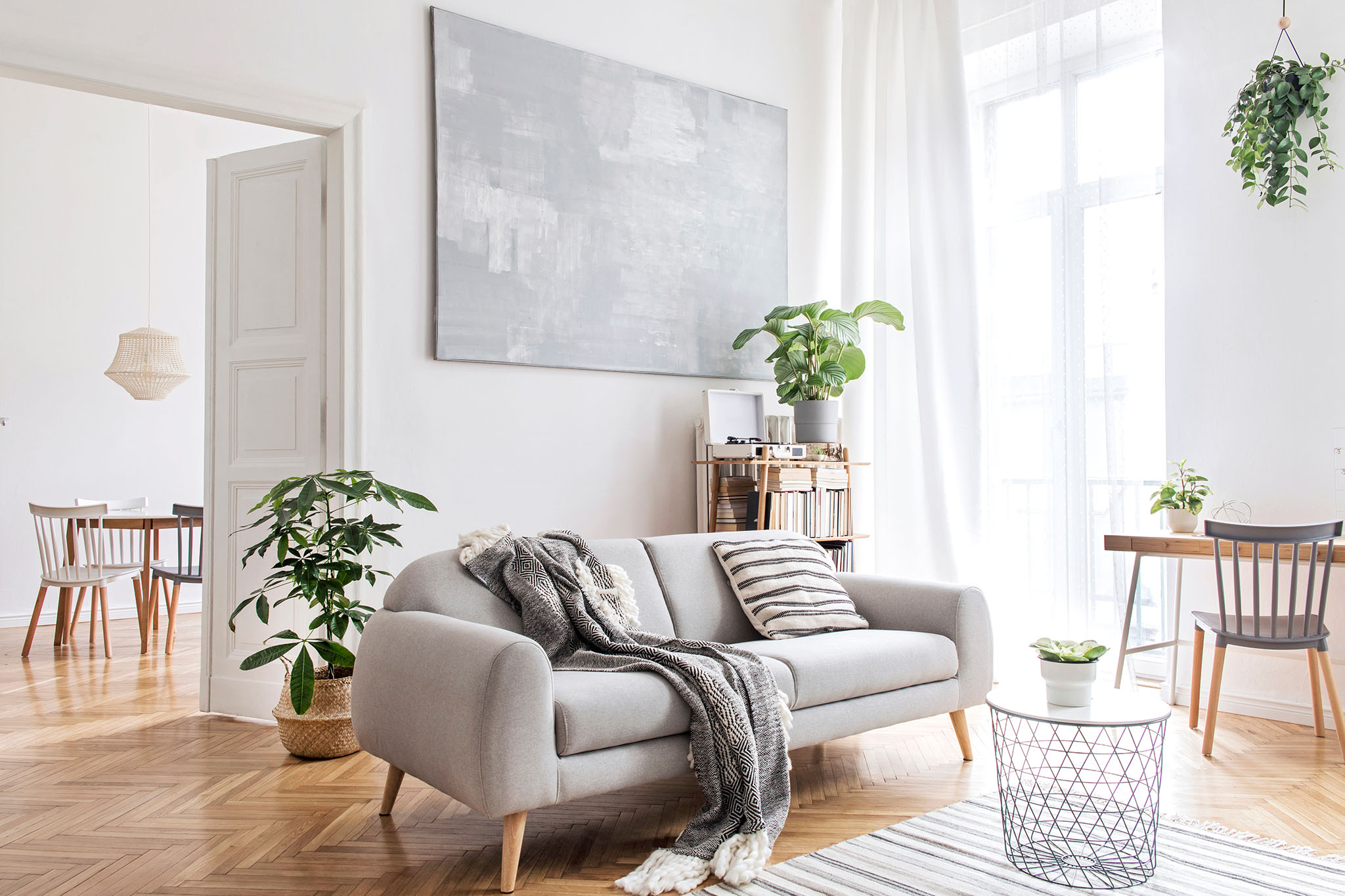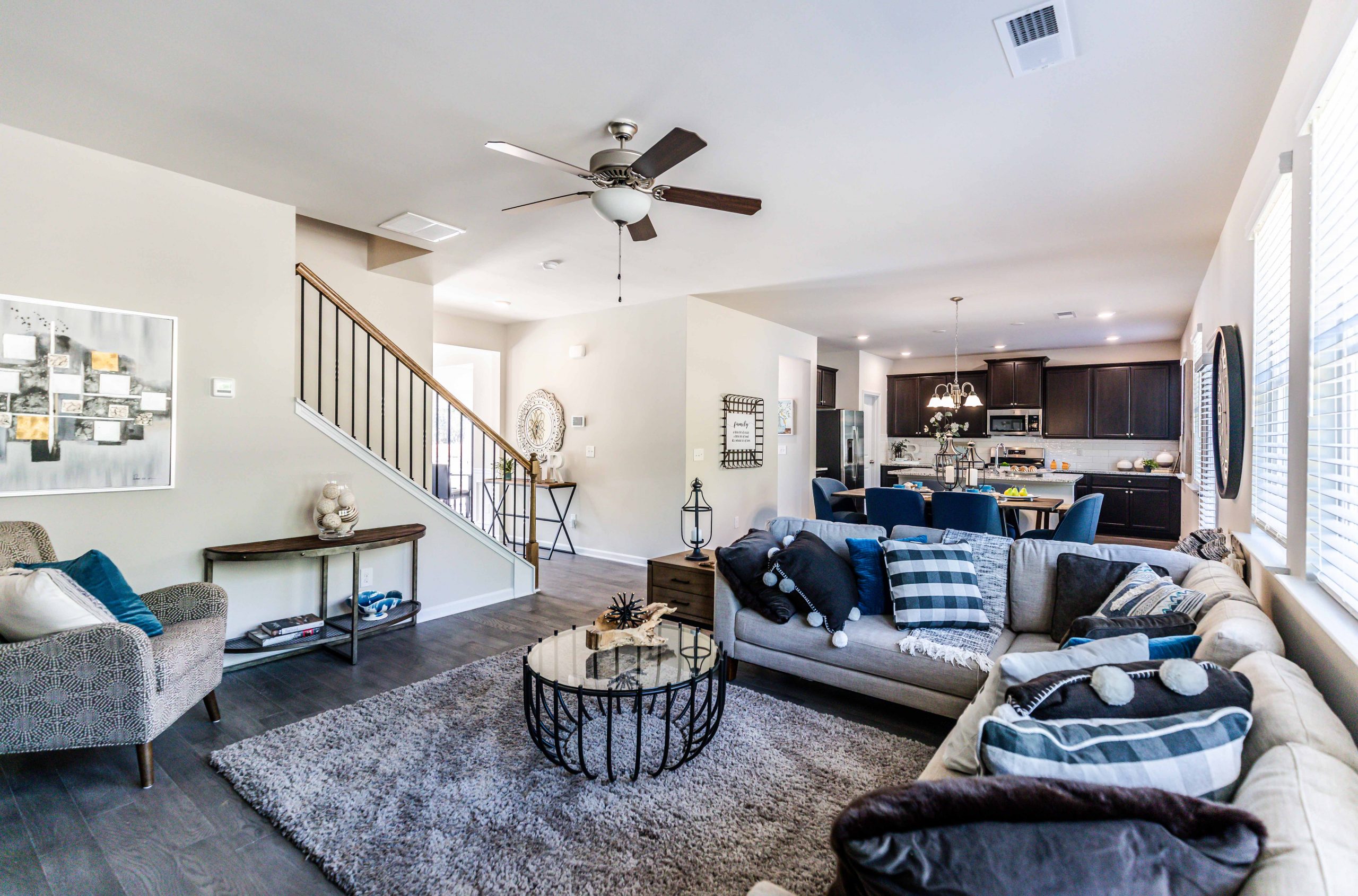Homeschooling has become a popular choice for many families, especially in recent times where traditional schooling may not be an option. However, not everyone has the luxury of a dedicated homeschool room. If you find yourself homeschooling in a small living room, don't worry, there are plenty of tips and tricks that can help you create an efficient and comfortable learning space. Homeschooling in a Small Living Room: Tips and Tricks
The key to homeschooling in a small living room is to maximize the space you have. Start by decluttering and organizing the room. Get rid of any unnecessary furniture or items that are taking up space. This will not only make the room feel bigger, but it will also give you more room to work with. Next, designate a specific area in the living room for homeschooling. This could be a corner, a wall, or even a small table. This will help create a sense of separation between the learning space and the rest of the living room. Creating a Homeschool Space in Your Living Room
When it comes to furnishing your homeschool space, think small and multi-functional. Look for compact desks or tables that can easily be folded and stored when not in use. Consider using storage ottomans or bins to store supplies and materials. You can also utilize wall space by installing shelves or hanging organizers for books and other materials. Another great way to maximize your living room for homeschooling is to use furniture with hidden storage, such as a coffee table with drawers or a sofa with storage underneath. This will help keep your living room looking neat and organized while also providing you with extra storage space. How to Maximize Your Living Room for Homeschooling
If you have a small living room that is also shared with other family members, it's important to find ways to make it work for everyone. One idea is to create a mobile homeschool cart that can be easily moved around the room and stored when not in use. You can also use dividers or curtains to create a designated learning area within the living room. Another creative solution is to use furniture that can serve multiple purposes. For example, a bookshelf can also act as a room divider, and a storage ottoman can double as a seat for both homeschooling and relaxing. Homeschooling in a Shared Living Space: Ideas and Inspiration
Don't be afraid to get creative when transforming your living room into a homeschool space. Consider using colorful and fun storage solutions, such as baskets or bins, to add some personality to the room. You can also use wall decals or posters to create a learning-friendly environment. Additionally, try to incorporate natural light into your homeschool space as much as possible. This will not only make the room feel more open and inviting, but it can also help improve focus and productivity. Transforming Your Living Room into a Homeschool Space
For many families, the living room serves as a multi-purpose space for various activities. If this is the case for you, it's important to find a balance between your different needs. One way to do this is by setting a schedule for when the living room is designated for homeschooling and when it can be used for other activities. You can also consider using furniture that can easily be moved and rearranged to accommodate different activities. For example, using a small table and chairs for homeschooling that can be moved to the side when the living room is needed for other purposes. Homeschooling in a Multi-Purpose Living Room
When designing your homeschool space, it's important to keep functionality in mind. Make sure there is enough space for your child to work comfortably, with easy access to all necessary materials and supplies. Consider using a whiteboard or chalkboard to keep track of schedules, assignments, and important information. This will not only help keep you and your child organized, but it can also serve as a fun learning tool. Designing a Functional Homeschool Space in Your Living Room
One of the biggest challenges of homeschooling in a small living room is finding adequate storage space. However, with some creative thinking, you can make the most out of your limited space. Use wall space and vertical storage solutions, such as shelves and hanging organizers, to free up floor space. You can also repurpose everyday items, such as mason jars or shoe organizers, to store small supplies like pencils and markers. Homeschooling in a Small Living Room: Organization and Storage Solutions
As mentioned before, utilizing vertical space is key to maximizing a small living room for homeschooling. In addition to shelves and hanging organizers, you can also use a pegboard to hang supplies and materials. This will not only save space but also make it easy to find what you need. Another idea is to use a foldable whiteboard or chalkboard that can be hung on the wall and easily stored when not in use. This will save space and provide a designated area for lessons and activities. Utilizing Vertical Space for Homeschooling in Your Living Room
If your living room is on the smaller side, don't let that discourage you from creating a functional homeschool space. With some creativity and organization, you can make the most out of your cozy living room. Consider using a lap desk or clipboard for your child to work on, instead of a traditional desk. This will allow them to move around and use different areas of the living room for learning. You can also use a small rug or floor cushions to create a comfortable reading area within the living room. In conclusion, homeschooling in a small living room may have its challenges, but with some careful planning and creativity, you can create a comfortable and efficient learning space. Remember to make use of vertical space, multi-functional furniture, and organization strategies to maximize your living room for homeschooling. And most importantly, have fun and enjoy the journey of homeschooling in the comfort of your own home. Homeschooling in a Cozy Living Room: Making the Most of Limited Space
The Benefits of Having a Homeschool Space in Your Living Room

Creating a Functional and Productive Learning Environment
 As the homeschooling trend continues to rise, many families are looking for ways to make their homes more conducive to learning. One popular solution is to create a dedicated homeschool space in the living room. This not only maximizes the use of space in the home, but it also offers numerous benefits for both parents and children.
Having a designated homeschool area in the living room allows for a more structured and organized learning environment.
Children are easily distracted, and having a specific space for learning can help them stay focused and motivated.
It also helps to establish a clear boundary between school and playtime, which can be challenging when homeschooling in a shared living space.
As the homeschooling trend continues to rise, many families are looking for ways to make their homes more conducive to learning. One popular solution is to create a dedicated homeschool space in the living room. This not only maximizes the use of space in the home, but it also offers numerous benefits for both parents and children.
Having a designated homeschool area in the living room allows for a more structured and organized learning environment.
Children are easily distracted, and having a specific space for learning can help them stay focused and motivated.
It also helps to establish a clear boundary between school and playtime, which can be challenging when homeschooling in a shared living space.
Promoting Family Bonding and Involvement
 Incorporating a homeschool area in the living room also encourages family bonding and involvement in the learning process.
Parents can easily oversee their child's progress and offer help and guidance when needed.
It also provides opportunities for siblings to learn together and for parents to participate in lessons and activities. This creates a sense of teamwork and strengthens family relationships.
Incorporating a homeschool area in the living room also encourages family bonding and involvement in the learning process.
Parents can easily oversee their child's progress and offer help and guidance when needed.
It also provides opportunities for siblings to learn together and for parents to participate in lessons and activities. This creates a sense of teamwork and strengthens family relationships.
Maximizing Space and Functionality
 Living rooms are typically the largest and most versatile spaces in a home, making them an ideal location for a homeschool area.
By utilizing this space, families can save money on additional rooms or furniture for homeschooling purposes.
The living room can also serve as a multi-functional space, providing a designated area for homeschooling while still being used for family activities and gatherings.
Living rooms are typically the largest and most versatile spaces in a home, making them an ideal location for a homeschool area.
By utilizing this space, families can save money on additional rooms or furniture for homeschooling purposes.
The living room can also serve as a multi-functional space, providing a designated area for homeschooling while still being used for family activities and gatherings.
Creating a Welcoming and Inviting Learning Environment
 With the right design and organization, a homeschool area in the living room can be a welcoming and inviting space for children to learn.
Adding vibrant colors, comfortable seating, and personalized decor can make the learning experience more enjoyable and engaging for children.
It can also help to create a sense of pride and ownership in their learning space.
In conclusion, creating a homeschool space in the living room offers numerous benefits for both parents and children. It promotes a structured and organized learning environment, encourages family bonding and involvement, maximizes space and functionality, and creates a welcoming and inviting learning environment. With a little creativity and planning, this space can be transformed into a productive and enjoyable learning environment for the whole family.
With the right design and organization, a homeschool area in the living room can be a welcoming and inviting space for children to learn.
Adding vibrant colors, comfortable seating, and personalized decor can make the learning experience more enjoyable and engaging for children.
It can also help to create a sense of pride and ownership in their learning space.
In conclusion, creating a homeschool space in the living room offers numerous benefits for both parents and children. It promotes a structured and organized learning environment, encourages family bonding and involvement, maximizes space and functionality, and creates a welcoming and inviting learning environment. With a little creativity and planning, this space can be transformed into a productive and enjoyable learning environment for the whole family.

















































































